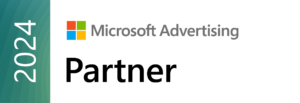It’s not news to anyone that eCommerce brands should have an SEO strategy that sets them up to compete for relevant queries and gain traction in search results. After all, if people can’t find what you’re selling, they can’t buy it.
So to help them compete, eCommerce brands optimize their websites to load pages faster, write more detailed product descriptions, build intricate internal linking structures, get backlinks from other sites, and check off the other boxes on the tried-and-true SEO best-practices list. But there’s another tool that can boost your products in organic search results, and it’s unique to eCommerce brands: Google Merchant Center.
Here are three ways to use Merchant Center to improve your eCommerce site’s visibility in search results.
Get All Your Product Pages Indexed
Before anyone can find your site in a Google search, your site’s web pages must be indexed. Googlebot — sometimes called a “crawler” or “spider” — scans the internet to find new pages and keep up with updates to existing pages.
In Google Search Console, you can use the URL Inspection Tool to see which of your pages Google has found and how many of those have been indexed. When you look at Google’s list of indexed and non-indexed pages, you might notice that Google is missing several important pages on your site.
There are two primary ways that Googlebot discovers pages on your website: following your sitemap and following links. But if a page isn’t in your sitemap or linked from another page — internal or external — Googlebot won’t know the page exists, meaning it won’t be indexed and won’t appear in the search results for any query.
These kinds of pages are called “orphan” pages, and they’re more common than you think. Sometimes people create orphan pages intentionally, but in most cases, they happen accidentally: People add new pages to the website without adding them to the site’s structure, Googlebot doesn’t know the page exists, and the page never gets crawled.
With Merchant Center, though, eCommerce brands can ensure that Googlebot finds and crawls each product page on your site, even if they aren’t in the sitemap and have no links pointing toward them. When you add a product to Merchant Center, the product page URL gets shared with Googlebot, allowing it to discover and crawl the page. Merchant Center shouldn’t be your first line of defense against orphan pages, but it can help.
Fix Product Pricing and Availability Inconsistencies
There isn’t a standard timeline for when Googlebot crawls your site. According to Google’s Search documentation, the bot uses an algorithm to determine “which sites to crawl, how often, and how many pages to fetch from each site.” Googlebot’s irregular crawls can cause inconsistencies between a particular product’s listed price and availability on your website and how it appears in search results.
For example, if you’ve raised a product’s price and updated your website to reflect the higher price, it can take days, weeks, or even longer for Googlebot to crawl your site and find the new price. In the meantime, Google still shows your product at the original price in search results. It’s easy to see how a situation like this makes for a poor user experience.
Unlike Search, Merchant Center can be updated at any time. When you make a price or availability adjustment on your website, Merchant Center will recognize the mismatch and automatically update your Shopping ads and free product listings in organic results to reflect the product’s price or availability listed on your website.
Opt-In to Appear in Google’s Shopping Tab
Using structured data for each product page is a great way to give people more information on the search results page before they click through to your website, but using structured data alone isn’t enough to be included in Google’s Shopping tab.
To have your items featured in Google’s Shopping tab, you must provide product feeds in Merchant Center and opt-in to Surfaces Across Google. Surfaces Across Google is a free service that allows your products to be displayed in organic search results across Google’s properties, including the Shopping tab, YouTube, Images, and more.
If you’d like to learn more information about optimizing your eCommerce site, check out Google Search Central’s eCommerce Essentials playlist on YouTube.







